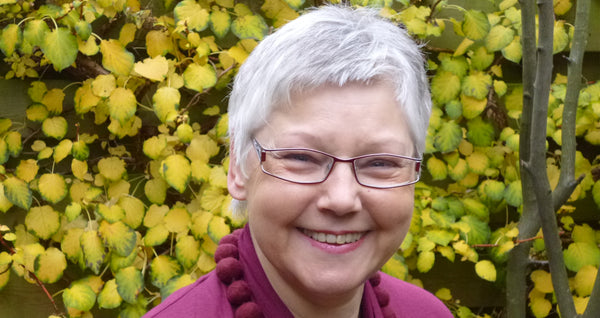Monique Rang, founder of Wikkelgoed
Monique Rang is the founder of Wikkelgoed. She was born in Amstelveen, but the first four years of her life she lived in South Africa. Once she was back in the Netherlands, her family moved to Sittard, in Limburg. After a difficult time at her school there, and the divorce of her parents, she went to live with her aunt in Leiden. Here, she finally found her place while studying at the Vrije school in The Hague, where she discovered her passion for arts and cradts. She decided to become an arts and crafts teacher and went to study 1e graads Handenarbeid. Before becoming a mother, she worked in Nijmegen as a Vrijeschool teacher. After raising her children, Robbe and Arne, she initially struggled to find work. This changed when she came into contact with a novice funeral director.
The birth of Wikkelgoed
The moment the idea of Wikkelgoed came about is linked to Monique's first confrontation with death. Her mother was ill for a while and was no longer allowed to get out of bed. As a gift, Monique bought her a purple-blue hand-woven cloth for her bed. Later, when the funeral director arrived with a coffin with satin lining that she did not like, Monique decided to cover the lining with the fabric she had bought. This is how the first idea of covering and shrouding came about. This idea, a wake where the body is surrounded by natural materials, stayed in her mind for a long time.
Monique's first shroud
In 1999, three years after the premature passing of Monique's mother, her grandmother passed away. Once again, the funeral director brought a coffin with a fabric that she did not like. After thinking about it for a long time, Monique's idea now came to fruition. She decided to buy a beautiful Matka silk cloth for her grandmother, and to wrap it around her body. Even though her grandmother was in a coffin, this was Monique's first real experience with shrouding a person. Now that she had experienced the use of a shroud herself and felt its value, she decided to do something with it. The very moment she realized this, the name 'Wikkelgoed' came to her.
Wikkelgoed as we know it
One day, Monique was invited by a novice funeral director to take part in a group discussion about funerals and wakes. They wanted to discuss more loving, warmer ways of laying out, and had heard of her ideas. This meeting eventually resulted in a long discussion about the use of natural materials and a cloth that could be used for shrouding a body. After this conversation, inspired by the idea of such funeral products, Monique decided to start making shrouds herself. She had always had a great interest in visual arts and textiles, and now things fell into place. There was an enthusiastic response to the shrouds she had made, which motivated her to continue. In 2001, she officially started under the name that had previously occurred to her: Wikkelgoed.
Monique's vision on funeral care
In Monique's eyes, the funeral, as it was classically designed, had something distant to it. The hard edges of a coffin reduce the desire for touch, while proximity is very valuable during the final farewell. This is why the shroud had made such an impression on her: a shroud encourages closeness and touch; you are literally closer to the deceased. She had experienced shrouding her grandmother as a valuable ritual, preparing someone who had been close to her for their final moments. She also imagined that a shroud could be closed a little further by relatives every day. In this way, a loved one can slowly be let go by, step by step. Monique found it most important that a funeral could be personal. That is why her shrouds are always simple in style, to give the relatives the opportunity to make them even more personal. For example, the shroud can be painted and flowers or notes can be placed in the folds of the shroud.


